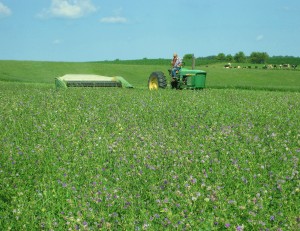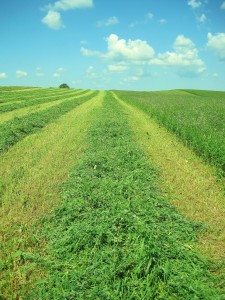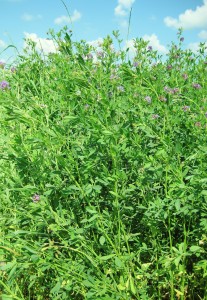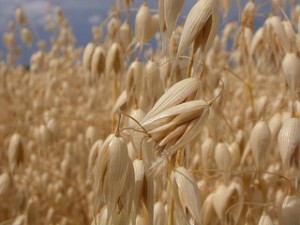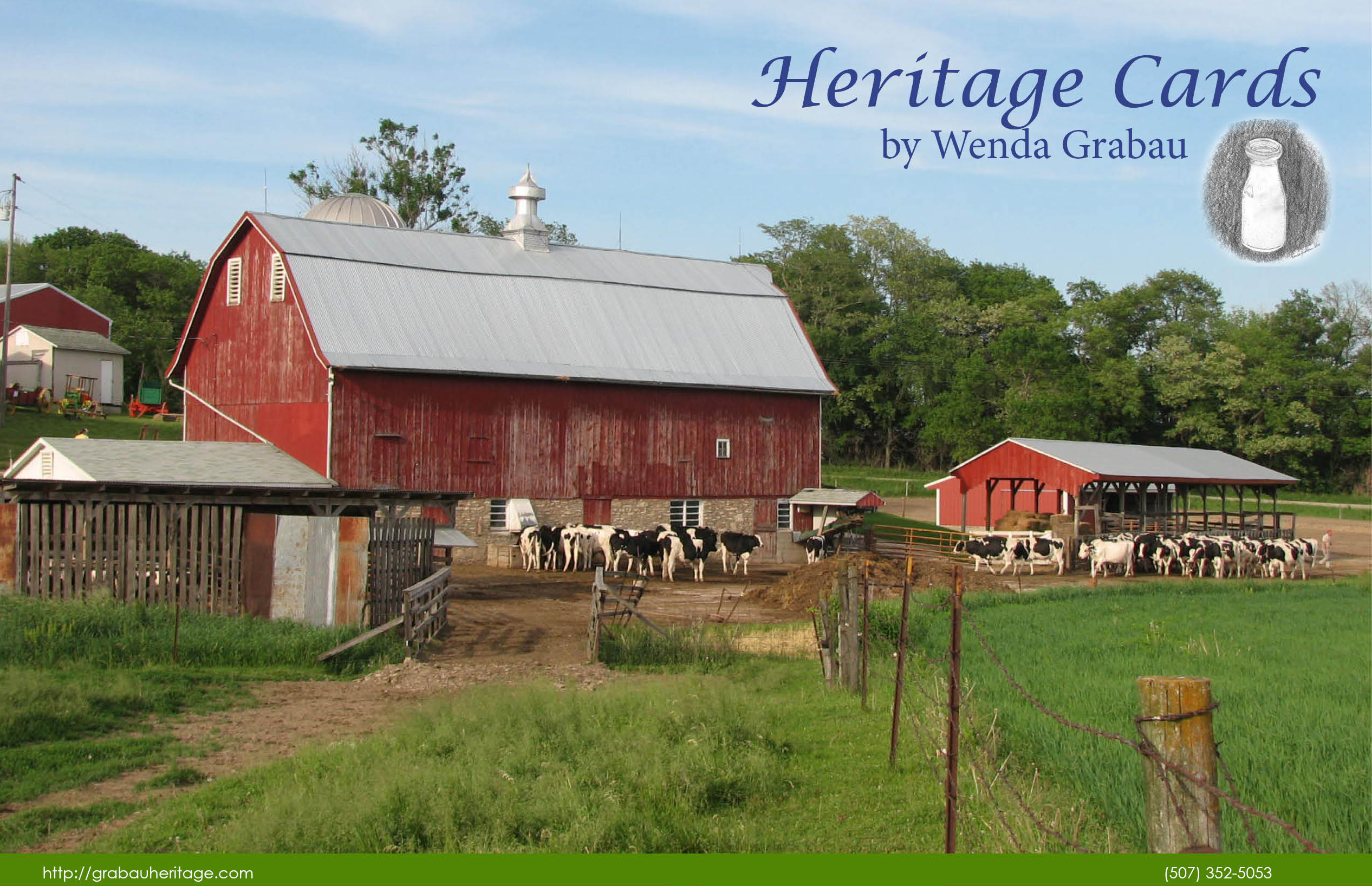After greasing the baler and having a light lunch, my husband gathers up the hay wagons. We hitch the baler up to the tractor and a wagon behind the baler.
I drive the tractor and baler out to the field. He drives the John Deere B with two other hay wagons in tow. The farm dog, alert with anticipation, waits for his signal from my husband that he may follow. He darts through the rows of corn to the hay field while we travel the dusty road to our destination.
My husband parks his tractor and gets the baler ready for action. He rides the wagon as I drive. Our baler makes small square bales. My husband rides the wagon to receive the bales and do the stacking for the first load.
The newly raked hay rows lay ahead resembling a rope. Baler tines pick up the hay off of the field and forks move the hay into a chamber. In the chamber, a plunger packs the hay tight into bales. As it comes out, needles
threaded with twine wrap the bales and the knotter ties the twine. There are tension controls on the twine that we can adjust. That way we can determine how heavily packed the bale will be.
The bales come out of the baler on a chute that lifts it up to a level that the stacker can grab it and pile it neatly in the wagon. One wagonload holds roughly 80 bales. When the first wagon is filled my husband takes it to the farm for unloading in the hay shed or in the barn.
Since haying is a 4-man job at our farm, the second stacker joins me in the field. Another person is already at the farm ready to unload the wagon, so that my husband can work at stacking them in the sheds or barn. This has been a team job for our family. We all get tired out, but haying, in most cases, is a satisfying time of working together.
Photo credit: Wenda Grabau
Photo credit: Wenda Grabau
Photo credit: Bretta Grabau





